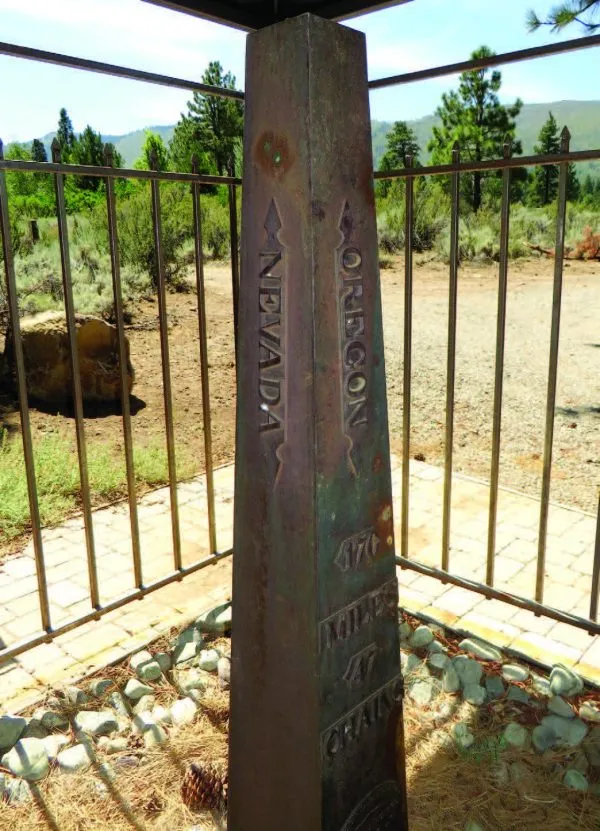Nevada, renowned for its bustling casinos and expansive deserts, hides a treasure trove of stunning and challenging hiking trails. However, to ensure a safe and fulfilling trip, thorough preparation and valuable knowledge are essential. This article provides a detailed guide to hiking safely in Nevada while uncovering fascinating stories about the state’s historic boundaries and their influence on your journey into nature.
Discover Nevada’s Scenic Hiking Trails
Nevada offers countless hiking trails with varying levels of difficulty and diverse landscapes, catering to adventurers of all experience levels. Here are some recommendations:
- Red Rock Canyon National Conservation Area: Famous for its radiant red sandstone cliffs, Red Rock Canyon offers a range of options, from family-friendly trails to daring mountain climbing challenges. Bring your camera to capture the breathtaking natural beauty.

- Valley of Fire State Park: With fiery red-orange sandstone formations, Valley of Fire provides a unique hiking experience. The trails here are often short and easy, making them ideal for beginners.
- Great Basin National Park: Located in eastern Nevada, this lush green oasis boasts towering mountains, pine forests, and the renowned Lehman Caves. It’s a perfect getaway to escape the desert heat and enjoy fresh mountain air.
- Mount Charleston: The highest peak in southern Nevada offers winding trails through pine forests and alpine meadows. In winter, Mount Charleston transforms into a popular skiing destination.
Safety Tips for Hiking in Nevada
Safety should always be your top priority when hiking, especially in a rugged environment like Nevada. Below are key precautions to take:
1. Plan Thoroughly
- Research your trail: Understand the trail’s length, difficulty, elevation, and expected weather conditions.
- Inform a trusted contact: Share your itinerary, including your chosen trail, departure time, and estimated return time, with a friend or family member.
- Check the weather forecast: Nevada’s weather can change suddenly, particularly in mountainous areas. Verify the forecast and prepare for unforeseen conditions.
2. Bring Proper Gear
- Hiking shoes: Choose shoes with strong grip, ankle support, and suitability for the terrain.
- Appropriate clothing: Wear breathable, moisture-wicking clothes that protect against the sun. Bring a windbreaker and rain jacket to handle weather changes.
- Backpack: Opt for a backpack that fits your needs for carrying supplies.
- Water: Carry plenty of water to stay hydrated throughout the hike.
- Food: Pack energy-rich snacks like protein bars, dried fruits, and nuts.
- Sunscreen, hat, and sunglasses: Protect your skin and eyes from harmful ultraviolet rays.
- Maps and compass/GPS: Even if you’re familiar with the area, having navigation tools can help in case you get lost.
- First-aid kit: Carry basic supplies to treat minor injuries.
- Flashlight or headlamp: Useful for evening or nighttime hikes.
- Multitool: A versatile tool for various purposes.
- Mobile phone and portable charger: Essential for emergency contact.
3. Follow Safety Rules
- Hike in a group: Hiking with others is safer than going alone.
- Stay on marked trails: Avoid shortcuts or wandering off-trail to protect the environment and avoid getting lost.
- Stay aware of surroundings: Monitor terrain, weather, and wildlife.
- Avoid wildlife: Never feed or approach wild animals.
- Practice Leave No Trace: Carry out all trash and dispose of it responsibly.
- Know your limits: Avoid overexertion or extreme climbing if your fitness or experience is insufficient.
4. Be Aware of Potential Dangers
- High temperatures: Nevada’s deserts can reach extreme temperatures in summer. Stay hydrated and avoid midday hikes.
- Dehydration: Symptoms like dizziness, fatigue, and cramping signal dehydration. Drink water before, during, and after your hike.
- Heatstroke: Severe overheating can cause dizziness, nausea, or headaches. Rest in shade and hydrate if symptoms arise.
- Treacherous terrain: Nevada’s trails often feature rugged landscapes with sharp rocks, steep cliffs, and drop-offs. Move carefully and avoid unnecessary risks.
- Wildlife: Dangerous species such as rattlesnakes, scorpions, and mountain lions inhabit Nevada. Maintain a safe distance and stay alert.
- Flash floods: Unexpected floods can occur in canyons and dry riverbeds during storms. Avoid hiking in these areas during rain conditions.
Exploring Nevada’s Historic Boundaries: Lessons from the Past
Nevada’s complex history of boundary formation—marked by disputes, survey errors, and political decisions—offers valuable insights into the uniqueness of this state’s natural beauty.

The Sagebrush War: This humorous “war” of the 1860s was a border dispute between Nevada and California. Despite its dramatic name, the conflict involved minor altercations and was ultimately resolved through negotiation.
Survey errors: Mistakes during boundary surveys significantly shaped Nevada’s borders. For instance, the northern boundary shifted 600 yards south of its intended location, resulting in the loss of over 50,000 acres of land.
Eastern adjustments: Nevada’s eastern border shifted several times in the 1860s to include newly discovered gold-mining areas, doubling the state’s territory.
These stories are more than historical events—they’re lessons in perseverance, compromise, and the importance of respecting nature. Reflect on these tales as you hike Nevada’s trails and appreciate the legacy of those who shaped this remarkable land.
Conclusion
Hiking in Nevada is an incredible experience, offering opportunities to explore untamed beauty and delve into the state’s distinctive history. By planning attentively, equipping yourself properly, and adhering to safety guidelines, you can enjoy a secure and memorable adventure. Remember, respecting nature and understanding history enrich your travel experience. Happy hiking on Nevada’s stunning trails!